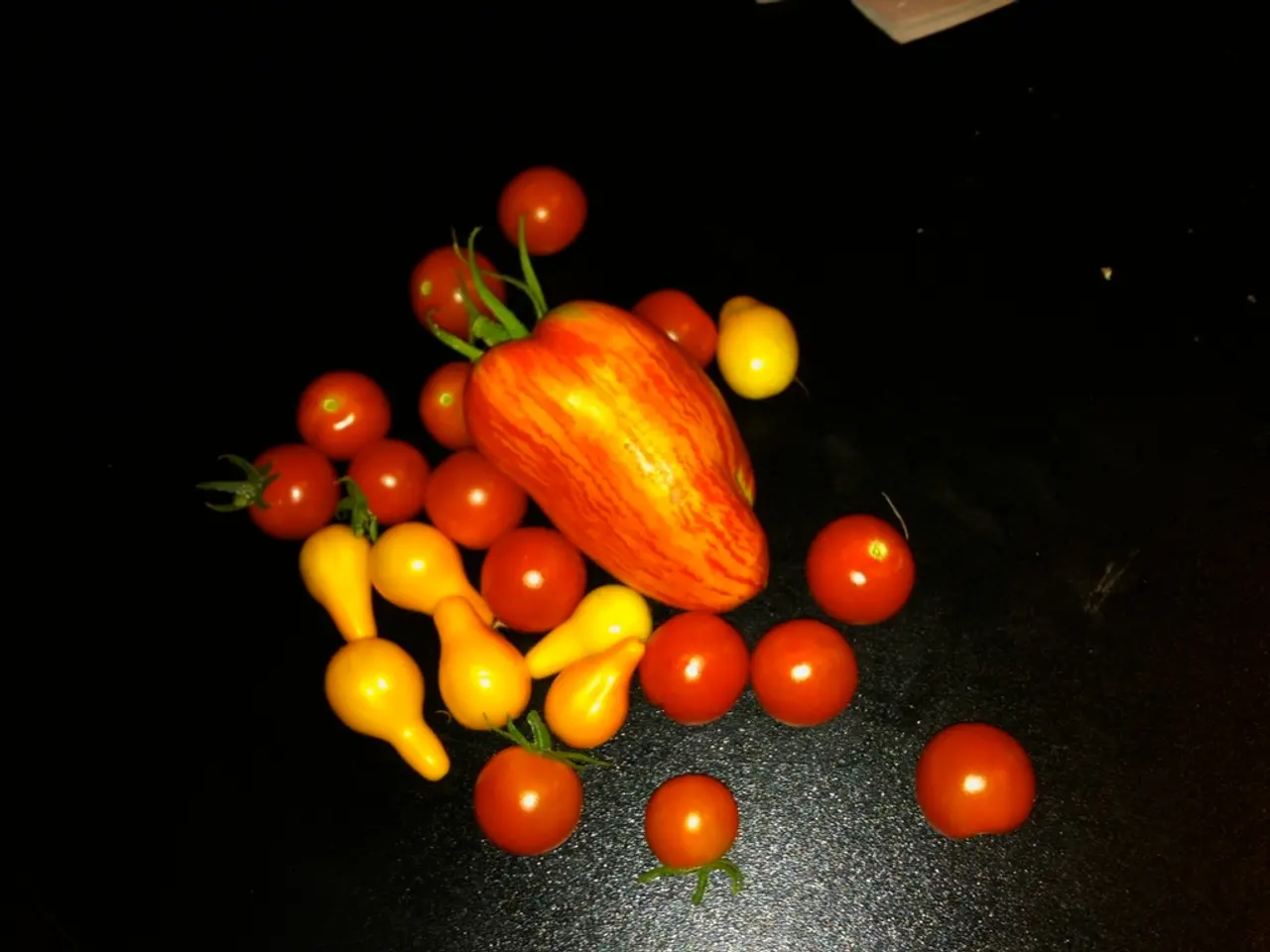Guide for creating homemade fruit purée strips: Nutrient-rich, all-natural treats
Homemade fruit leather is a simple, nutritious, and portable snack that concentrates all the beneficial nutrients found in fresh fruit into a shelf-stable form. This article will guide you through an easy recipe for homemade fruit leather and discuss its nutritional benefits compared to store-bought options.
The Best Homemade Fruit Leather Recipe
The recommended recipe for homemade fruit leather is a simple one using fresh fruit, honey (or sugar), and optional lemon juice for brightness. Here's a widely praised recipe that includes:
- 4 cups diced fruit (e.g., strawberries or any fruit of choice)
- 2 to 3 tablespoons honey or sugar
- 1 tablespoon lemon juice (optional)
The process involves blending the fruit with honey and lemon juice until smooth, spreading it thinly on parchment paper or a silicone baking mat, and baking at a low temperature (around 150–200°F) for 4 to 8 hours until the leather easily peels off and is no longer wet or tacky. Cooling completely before cutting or rolling is important.
Nutritional Benefits Compared to Store-Bought Fruit Leather
No Artificial Additives or Preservatives
Homemade fruit leather contains only whole fruit, natural sweeteners, and optional lemon juice, avoiding the added sugars, artificial flavors, colors, and preservatives common in store-bought versions.
Lower Sugar Content
Recipes often use modest amounts of natural sweeteners like honey or none at all, compared to commercial fruit leathers that can be high in refined sugars.
Higher Vitamin and Antioxidant Retention
Fresh fruit preserves more vitamins such as vitamin C and antioxidants versus processed fruit leather, which may lose nutritional value due to commercial processing.
Customizable Fruit Content
Homemade leather allows use of a variety of fresh or frozen fruits, supporting variety in nutrients and phytochemicals, while store-bought options are typically limited to popular, mass-produced flavors.
Dietary Fiber Retention
Since homemade fruit leather is made purely from blended fruit puree, it retains fiber naturally present in the fruit pulp more fully than some commercial equivalents where fiber may be reduced or altered during manufacturing.
Overall, homemade fruit leather is a healthier and more nutritious snack option due to minimal ingredients and better control over sugar and additives, making it superior to most store-bought alternatives.
In Summary
| Aspect | Homemade Fruit Leather | Store-bought Fruit Leather | |-----------------------------|------------------------------------|--------------------------------------------| | Ingredients | Fresh fruit, minimal natural sweetener, lemon juice (optional) | Fruit concentrate, refined sugars, preservatives, artificial additives | | Sugar content | Can be low or controlled | Often high, including refined sugars | | Nutritional retention | Higher vitamin C, fiber, antioxidants | Reduced due to processing | | Additives | None | Commonly includes preservatives, flavorings | | Customization | High (any fruit, sugar control) | Limited flavors, fixed sugar content |
For best results, monitor drying time closely to avoid over-baking, which can make the leather overly crisp instead of chewy. The recommended recipe from MOMables and The Recipe Critic offers an easy, nutritious homemade fruit leather that is healthier and potentially tastier than commercial products.
Essential equipment for making fruit leather includes a blender or food processor, a large rimmed baking sheet, parchment paper or silicone baking mat, dehydrator or oven, sharp knife or kitchen scissors, and airtight storage containers. The article provides a recipe for making approximately 8-10 servings of fruit leather using 1kg of fresh fruit, optional natural sweeteners, lemon juice, and vanilla extract. Optimal Storage Methods: Store fruit leather in an airtight container for 1-2 months, maintaining freshness and flavour over time.
Mastering fruit leather requires attention to detail, understanding how different factors affect the final product. Consider using alternative sweeteners such as honey or maple syrup for added nutritional benefits. Natural Sweetening Options:
For more expert tips and creative serving and presentation ideas, be sure to check out the full article linked below. Homemade fruit leather represents the perfect intersection of health, convenience, and delicious flavour, making it an ideal addition to any healthy kitchen repertoire.
Full Article
This article was generated by Mistral AI. If you have any questions or feedback, please contact [email protected].
- Homemade fruit leather is a simple, nutritious, and portable snack, made with fresh fruit, honey or sugar, and optional lemon juice.
- The recipe involves blending the fruit with honey and lemon juice until smooth, spreading it thinly, baking at a low temperature, and cooling completely before cutting or rolling.
- Homemade fruit leather contains only whole fruit, natural sweeteners, and optional lemon juice, avoiding added sugars, artificial flavors, colors, and preservatives often found in store-bought versions.
- Fresh fruit preserves more vitamins and antioxidants than processed fruit leather, and homemade leather allows for customization with various fresh or frozen fruits.
- Making fruit leather requires minimal equipment such as a blender, large rimmed baking sheet, parchment paper or silicone baking mat, dehydrator or oven, sharp knife or kitchen scissors, and airtight storage containers.
- Sustainable food and drink options, such as homemade fruit leather, support health-and-wellness, fitness-and-exercise, and overall lifestyle choices by providing nutritious alternatives to processed products.
- By making fruit leather at home, you gain better control over the sugar content, making it potentially lower than store-bought options.
- For more expert tips, creative serving and presentation ideas, and a full recipe, be sure to check out the article linked on food-and-drink and lifestyle websites.




